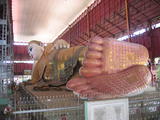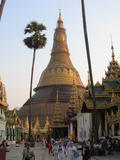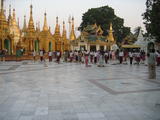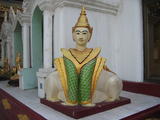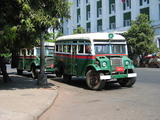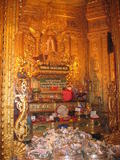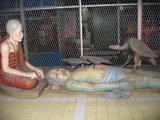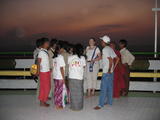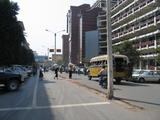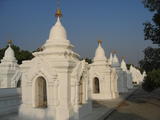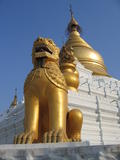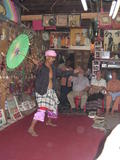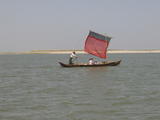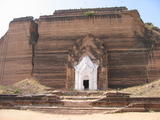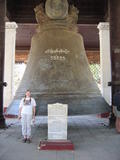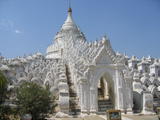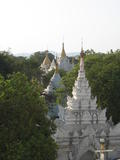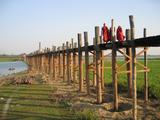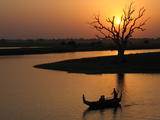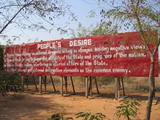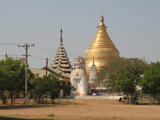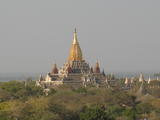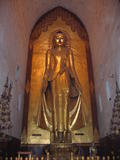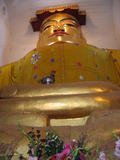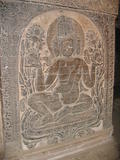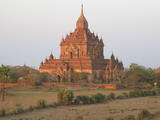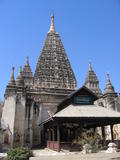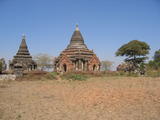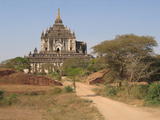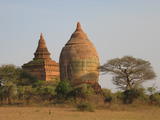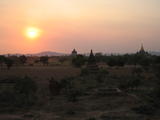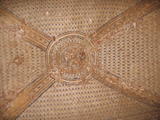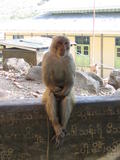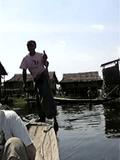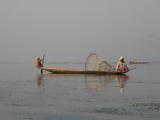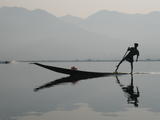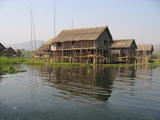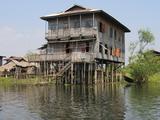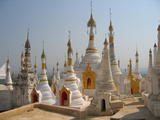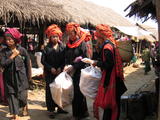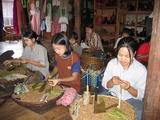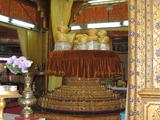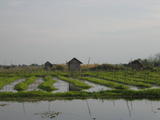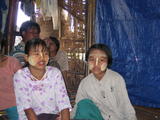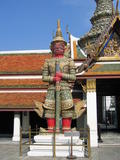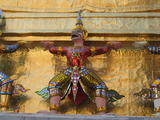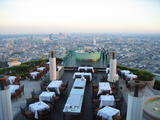| < < < Previous story | Next story > > > | |
Land of the Golden TemplesGalle, 18 April 2005
Contents:BoycottAfter Cambodia we traveled to Myanmar via Bangkok. Myanmar is an isolated country, ranking 154th on the list of countries surveyed in the Heritage Foundation's Index of Economic Freedom 2005, beating only North Korea. Political freedoms are certainly not much better either. Although Myanmar is now the official name of the country, the name change from Burma to Myanmar was imposed by the current unelected military government and hence has not been fully accepted, at least outside of the country. However in Burmese (the language of Myanmar) the country has apparently always been called Myanmar. I use the name Myanmar in my story for that reason, except when the name Burma seems more appropriate. It is impossible to travel to Myanmar without being confronted by the current travel boycott against the country. Specifically the Campaign for Human Rights and Democracy in Burma which recently launched a new campaign, in which they ask people to sign a pledge, that they will not visit Burma. All the arguments used in support of the travel boycott may be correct, but there are two points of discussion. The first is about the unequal treatment of offenders, why after all would a travel boycott not be applied across the board to all countries that commit human rights violations? For example why is there no travel boycott against China, for its actions in Tibet or its human rights violations at home? The second point is that it is unfortunately the people of Myanmar who bear the brunt of this boycott. Already living in difficult circumstances they may now also be starved of the revenues that foreigners could bring them. Rest assured that the generals, with their support from Beijing, will remain in power and live a life of luxury at the expense of their citizens, regardless of the boycott. I would strongly urge any person who chooses to visit Myanmar, to think very carefully about where they spend their money. Do not go through official travel agents, but visit the country independently. This will give you full control over where the money goes to. Until recently those not traveling on organized tours were forced to exchange 200 US Dollars into Foreign Exchange Certificates so that the government could still get their hands on some of the foreign currency that independent travelers brought into the country. However in an attempt to promote tourism, this obligation has now been abolished. While traveling in Myanmar you can spend your money at private hotels, bus companies and airlines. Like in any country however the government still earns money through taxation and certain fees, but it is well possible to make sure that most of your money ends up in the pockets of ordinary citizens. Myanmar is a very poor country. Its infrastructure is in dismal condition. Traveling on Kipling's famous road to Mandalay is therefore an excruciatingly lengthy experience, not to mention uncomfortable. Though we were still glad to be on the bus when we saw that the train had derailed, its passengers walking to the road to try to get on some of the passing buses. The largest banknote is one of 1000 Kyat, worth approximately 0.85 EUR or 1.10 USD, which is the lowest value largest banknote of any country we have visited so far. Even in Laos the largest banknote was worth a whole 2 USD. Contrasting with this is the incredible richness of Myanmar's sights. The country is dotted with golden zedis (stupas) and gold leaves are ceremonially affixed to many Buddhas. Yangon's highlight is surely Shwedagon Pagoda, impressive even though the golden zedi was being renovated while we were there. There is a diamond at the top, only visible at night from certain points as a dot of light. The diamond refracts the light from the spotlights at certain angles (not the kind of logical explanation that you will hear at the pagoda). Two other golden zedis in Yangon are Sule Pagoda, spot in the center of town and Botataung Pagoda, unique because the stupa is hollow. Inside each stupa is said to be a relic of some sort, in Botataung this is a hair of the Buddha. The zedi was destroyed during WWII, the relic was found amongst the rubble. MandalayMahamuni Paya in Mandalay has a Buddha statue covered in gold leaves, so thick that the original form is barely visible, every day the faithful (and the not so faithful, like me) continue to stick more leaves of gold on the statue. Strangely women (or "ladies" as the sign read) were not allowed to approach the Buddha. There were an annoying number of beggars at this temple. Kuthodaw Pagoda (or "the world's largest book"), also in Mandalay, has 729 marble slabs with the entire Tripitaka inscribed on them. Each slab is housed in its own little stupa. If you learn to read Burmese numerals you can, to the amazement of the monks, find the last page, page number 729. A short and pleasant boat trip up the Ayeyarwady river from Mandalay, lies Mingun, which would have been the site of the world's largest zedi (stupa), had it been completed. The zedi was planned to be 150 meters tall, but only the base was built. Mingun also claims to have the largest hanging uncracked bell in the world, weighing 90 tonnes. You can get under the bell and ask for someone to "ring" it for you. In Amarapura, just south of Mandalay, one can find U Bein's bridge, a 1.2 kilometer long teakwood bridge that snakes across a lake. What made our visit to Mandalay an even more exciting experience was that we met a group of English students on Mandalay Hill. They invited us to their class so that they could practice their English with us. It was a fun experience. An entirely different experience was a visit to a Moustache Brothers show. Par Par Lay, the group's leader spent 7 years in jail for making a joke about the government. He is actually mentioned by name in the movie "About a Boy" which stars Hugh Grant. It was coincidentally on February 14th when both these experiences made us fall in love with the people of Myanmar! It made me think how counterproductive the boycott actually is. We should visit this country, we can actually help them, for example to practice English and inform them about the outside world or give some handy tips for using the Internet. But also to help keep the spotlight on a persecuted dance troupe, like the Moustache Brothers, so that the government will hopefully continue to leave them alone. The more foreign eyes there are in Myanmar the more protection there is for the people of Myanmar. BaganAfter so much traveling we are sometimes unimpressed by things. Other tourists click away in awe at things that have become normal to us, a local market, a river boat, another temple, waterfall or whatever. Then we are happy to be impressed again by something so out of the ordinary and unique as Bagan. Bagan, a temple area 8 hours south of Mandalay, officially counts 2217 temples spread out over a vast area. The view from any temple top consists of other temples as far as the eye can see! One can spend days pleasantly roaming around the temples in a horse cart or on bicycle. You will soon get very confused by all the odd sounding temple names, it helps to write them down, otherwise I couldn't possibly tell you the temples that we visited. Wetkyi-in, Gubyangyi (many frescoes were taken by a German collector), The-Gyar-hit, Upali Thein, Law-ka Hitpan, Ananda Pahto (one of the biggest and best preserved), Migala Zedi, Shwesandaw Paya (nice view from upper terrace), Ananda Ok Kyang (the monastery next to Ananda with well preserved murals), Makabodhi Paya (with pyramidal spire), temple 1976 (with its 5 sides and real name unknown to me), Bupaya (by the river), Gawdaw Palin, Thatbyinnyu Pahto (the biggest in Bagan, but unfortunately one cannot climb up), Ngakywendaung Paya (with its nice view), Mimalaung Kyaung (quiet), Dhammayangyi Phato (big but missing its top), temple 730 (another 5 sided temple whose name I do not know) and Nandamannya (which was unfortunately closed). Not to forget a little side trip to mount Popa. Out of the 2217 temples only 17 are pentagonal and I found 2 of them by pure coincidence while cycling around the Bagan area. Both were not indicated on my map, so I still have no clue how they were called and can only identify them by their numbers: temples 730 and 1976. Numbers which incidentally are written only with Burmese numerals so it pays to learn them (it also happens to be a nice way to impress the locals, who are invariably surprised). Inlay LakeWe spent a few more days on Inlay lake, well not really on the lake as those resorts are rather expensive, but in the nearby town of Nyangshwa. A beautiful lake in the mountains littered with villages on stilts and floating gardens. Local boatmen have a curious paddling method, they use a foot to paddle. It all seems a little inconvenient, but most of them are doing it that way, so there must be something to it. Somewhere in the lake lies a temple, nicknamed Jumping Cat Temple, where the monks have trained cats to jump through loops. Very curious. A short bicycle ride away from Nyangshwa lies Maing Thauk village, which is entirely on stilts and still quite authentic. On the day we visited we were told that 2 other tourists had come earlier that day. Lasting ImpressionsWe returned to Yangon to catch our flight back to Bangkok. As we left Myanmar, we reflected on our visit. It is a country that left us with very strong impressions, first and foremost from the people we met and talked to. Many Burmese showed a great interest in talking with us, it gave them an opportunity to practice their English and ask some questions about the outside world. I was impressed by their friendliness and their strong desire for freedom (at least amongst young people). One young man showed me a photo of Aung San Su Kyi only to exclaim "I love her". A deep expression of happiness appeared on the face of that young Burmese man when I told him that the whole world knows what is going on in Myanmar and that we all support her cause. Secondly we were impressed by the splendid temples, it seems that golden stupas are everywhere! The country really has an exceptionally rich heritage. Traveling in Myanmar is like traveling used to be, before the age of mobile phones and the Internet. Though both can be found in Myanmar, hardly anyone has a mobile phone and the Internet has been neutered so that people cannot exchange e-mails without the government being able to read them. They do this using a filtering software package called DansGuardian, developed by Daniel Barron, that blocks all web-based e-mail services such as Yahoo and Hotmail and forces you to use a government controlled e-mail service. After having visited Myanmar and met so many Burmese people we can say that we now care a lot more about them and certainly will be following developments closely, hoping for the best, a peaceful and bloodless transition to democracy. I am more convinced than before that the travel boycott is counter productive. I will say to you simply: go there independently, fall in love with Myanmar and its people! Back in Krung Thep, better known as Bangkok, for the last time on this trip, we finally managed to visit the Royal Palace. Generally in Bangkok, we had been organizing our travels and doing the normal things in life, such as eating nice food, using the Internet and going to movies. After a few days, we were off to Malaysian Borneo, like Myanmar also a beautiful destination, but in an entirely different way. That will be the topic of our next travel update. If you would like to be notified or no longer want to be notified of our travel updates please e-mail me. e-mail Otto de Voogd PhotosYangonMandalayBaganInlay Lake Peddling VideoInlay LakeBangkokPractical Information
To my knowledge the information provided here was accurate
at the time of our visit. However time passes and things can change.
Boycott or not?On the one hand the Campaign for Human Rights and Democracy in Burma simply asks people not to go to Burma. On the other hand Voices for Burma asks people only to go if they can create a positive impact for the people of Burma. We found the Lonely Planet guide to Myanmar to be quite helpful in avoiding businesses run by the government or military. If you are not prepared to do the research and make this effort, then please do not go. Visas
Myanmar: 950 THB (through our travel agent in Bangkok)
Money
There are no ATMs in Myanmar, your best bet is to bring cash US Dollars,
hotel and other tourist charges are labeled in USD anyway.
Euros are sometimes accepted too (but the rate is not great).
InternetThe Internet in Myanmar has been neutered by the government, it is impossible to reach web-based e-mail services such as Yahoo! or Hotmail, you have to use the government's e-mail service to send and receive e-mails. Fortunately you can access your Yahoo! address book by going directly to address.yahoo.com, which at least allows you to get the e-mail addresses of the people you want to mail. CostsThailand - Baht, approx. rates: 1 USD = 37.50 THB, 1 EUR = 48 THB
Bangkok: Four Sons House: 550 THB (bathroom, TV, aircon)
Myanmar - Kyat, approx. rates: 1 USD = 900 MMK, 1 EUR = 1150 MMK
Yangon: Taxi to city: 5 USD (cheaper may be possible if you walk out of the
airport compound to find a taxi there)
Thailand - Baht, approx. rates: 1 USD = 37.50 THB, 1 EUR = 49 THB
Taxi from Airport to Khao San Road (meter + 50 THB): 177 (meter) + 50 (airport
surcharge) + 60 (toll) = 287 THB (in comparison the airport bus costs 100 THB
per person)
| ||
| < < < Previous story | Next story > > > | |
New | About | Contact | Connect | Friends | Promotions | Copyright | Advertise

